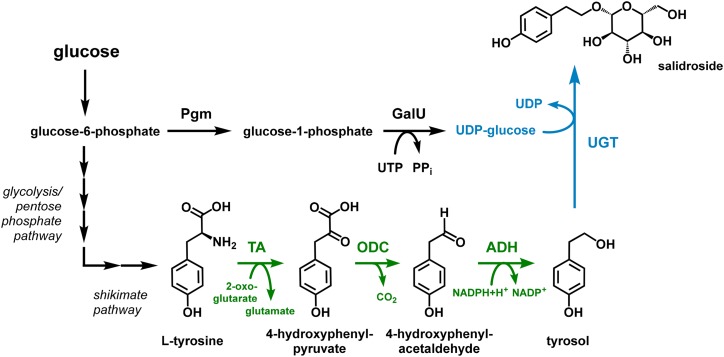Figure 6.
Biosynthetic pathway exploited for salidroside production in S. cerevisiae and C. glutamicum. The direct salidroside precursor tyrosol can be obtained from the aromatic amino acid l-Tyr by an Ehrlich pathway (shown in green), which is naturally present in S. cerevisiae and which was functionally introduced into C. glutamicum by expression of the heterologous genes aro10 and yqhD encoding 2-oxo acid decarboxylase and alcohol dehydrogenase, respectively. The conversion of l-Tyr to 4-hydroxyphenylpyruvate was catalyzed by endogenous transaminases in both organisms. C. glutamicum was also engineered toward an increased supply of UDP-Glc required for the glycosylation of tyrosol catalyzed by UDP-Glc-dependent glycosyltransferases (shown in blue). To this end, genes coding for phosphoglucomutase and GalU were expressed for increasing the conversion of the glycolysis intermediate Glc-6-P to UDP-Glc. Pgm, phosphoglucomutase; TA, transaminase; ODC, 2-oxo acid decarboxylase; ADH, alcohol dehydrogenase.

